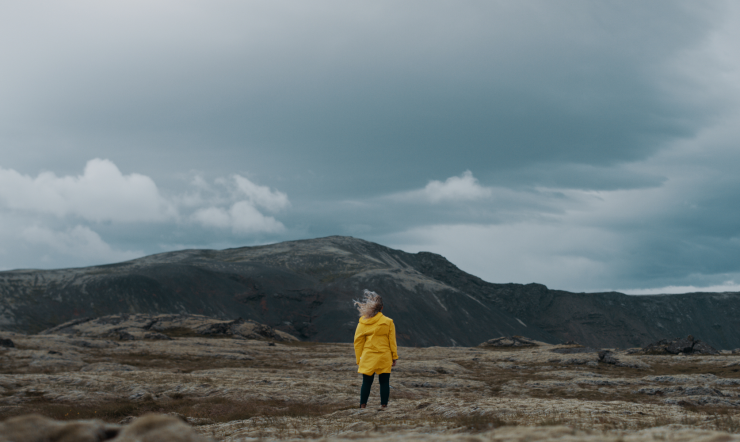Robots can perform tasks that humans are better off avoiding. Now, generative artificial intelligence is revolutionizing the way robots “think”.
“Welcome to our robot garden,” says Stein H Danielsen, co-founder and Chief Solution Officer at Cognite.
A yellow, mechanical dog approaches from the side. It can carry, hear, and see even better than humans. It understands its environment and can figure out the best way to react in a given situation.
This is one of several autonomous robots being trained at the facility just outside of Oslo, Norway. The robot garden was developed in collaboration with Cognite’s partners at Createc, Aker Solutions, and TESS. The goal is for the robots to assist humans with dangerous, demanding, or mundane tasks.
“Robots never get tired or bored of repeating the same task over and over again. But they can also handle things we humans should avoid, like dangerous chemicals or risky tasks,” Danielsen says.
Developing the “Robot Brain”
Humans have been fascinated by the idea of robots since ancient times, with Greek myths depicting «metal-men» and statues that came to life. But even today, as robots actually assist people and industries with a variety of tasks, the challenge remains largely the same:
How do we give robots knowledge? How do we ensure they learn? Is it possible to create a robot capable of making its own assessments?
“At Cognite, we’re essentially working on developing the ‘robot brain’,” says Danielsen.

Stein H. Danielsen, co-founder and CSO at Cognite.
Contextualizing Data
Cognite is a technology company founded in Norway, globally recognized for its industrial data software. Simply put, Cognite specializes in solutions that contextualize vast amounts of raw data, making this information useful for decision-making and automation purposes.
Major companies around the world use Cognite’s data platform, Cognite Data Fusion®, to find answers to everything from the best ways to manage turbines in a hydroelectric power plant to how a factory can minimize the wastage of raw materials.
“We collect massive amounts of data from various locations and industries. This includes information on everything from small bolts to large machines, temperature, power consumption—data on just about everything,” Danielsen says, adding:
“This is an overwhelming amount of data, and it is difficult to see how these data points are connected and find the data you need at any given moment. To solve this data problem, we contextualize the data in Cognite Data Fusion.”
However, all of this depends on one very important factor: data quality. Without good data, neither robots nor language models are of much use.
“In an industrial environment, there’s no room for error. That’s why we say artificial intelligence isn’t a quick fix. If you feed the models garbage, you get garbage back. But with good data quality, you get an accurate representation of reality. That’s the most important thing we do at Cognite.”

Cognite Data Fusion
Using generative AI to control robots
Over the past year and a half, one particular technology has garnered more attention than others: generative artificial intelligence.
Simply put, generative artificial intelligence (AI) is a type of AI that can create new content such as text, images, and video. The engine behind generative AI is known as large language models.
Large language models are trained on vast amounts of data sourced from the internet, newspapers, books, blogs, social media, comment sections, and much more. Using all this training material, a language model can create entirely new content or solve tasks you ask it to perform.
This technology powers services like Copilot and ChatGPT.
But did you know that generative artificial intelligence can do much more than just produce text, summarize email threads, and transcribe meetings?
It can also be used in industrial settings. Cognite employs this technology to control robots. Or more precisely, it allows you to control the robots—with your own voice.
“Generative AI is Changing Everything”
Using robots for industrial purposes isn’t necessarily new. Cognite has been actively using various types of robots across many different industries for years. Data shows that these robots already work ten times faster than humans.
“Now, generative AI is starting to change everything,” he says.
Using the language model GPT-4, robots can respond to plain text—essentially what you say to them in everyday speech. They also understand the context of the tasks they are supposed to perform, aided by advanced sensors and OpenAI’s Vision API, which allows the robots to see and interpret their surroundings.

Combined with the contextualized datasets from Cognite Data Fusion—which are trained on all operations, documentation, and relevant tasks from the industry in which the robot operates—you get robots that can reason their way to the right approach to a task, rather than being confined to rule-based instructions.
Danielsen provides an example:
“Let’s say there’s water on the floor of an oil platform, and it rained earlier in the day. The robots might then say, ‘This is just rain.’ But if there’s liquid under a valve that is usually closed, they can understand that there’s been a leak.”

Easier to Program Robots
Until now, programming robots has been a painstaking and manual task.
Previously, everything had to be calculated in advance, involving work with coordinates and complex algorithms. Even the simplest command, like getting a robot to differentiate between objects, was highly complicated to execute.
“Not everyone has been able to do this, so robots have been limited to very specialized applications. But now, as we equip robots with generative artificial intelligence, we are really talking about a game changer.”
“Now, the process of controlling the robots will become available for anyone—just by using plain language. From having specialists coding advanced step-by-step instructions, workers can have conversations with robots, completing tasks faster, with less risk, and at a lower cost.”
Making Robots More Accessible
Working this way also means there’s no need to individually train each robot. The capabilities that one robot possesses can be duplicated and scaled to other workplaces.
This means that in the future, robots could become significantly cheaper to produce, making them more widespread and easier to adopt.
“I’m convinced that in the near future, robots will be performing a myriad of tasks across all industries. And probably in our homes too,” Danielsen says.

Built on Top of Microsoft Azure
Cognite and Microsoft are partners, with Cognite building its software on top of Microsoft Azure’s cloud infrastructure.
“This foundation provides us with a secure and scalable solution that allows us to be innovative, flexible, and meet our customers’ needs,” says Danielsen.
Data security is a top priority, and Microsoft Azure’s built-in security infrastructure provides a secure and robust foundation to build on.
In 2024, Cognite was also named «Partner of the Year» by Microsoft in the Energy and Resources category—a global award among all companies worldwide that have a partnership with Microsoft.
Offering virtual AI agents
Before the summer, the company Cognite launched Atlas AI, which, simply put, are specialized virtual AI agents.
AI agents are a type of technology that can automate business processes without needing clear instructions for specific tasks. Cognite Atlas AI can help make work easier for process engineers, field workers, maintenance teams, and others who use data—while also improving efficiency, reducing costs, and increasing accuracy.
The product is built on multiple technologies. Under the hood, besides Cognite Data Fusion, it includes various large and small language models, along with functionality from Microsoft’s Copilot.
“We are seeing a transition from a single model to a portfolio of models where customers can choose the best one for their needs. Here, Microsoft Copilot and Cognite Atlas AI are combined for better performance by fine-tuning the models with specific data and expanding what language models can achieve,” says Ole Henrik Ree, Strategic Client Director at Microsoft Norway, adding:
“At Cognite, we have a partner as dedicated to AI innovation as we are,” he concludes.


































